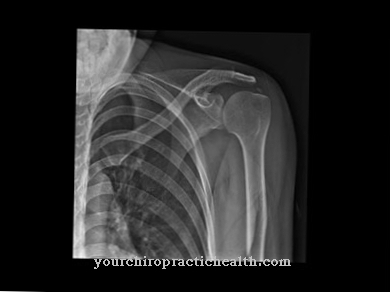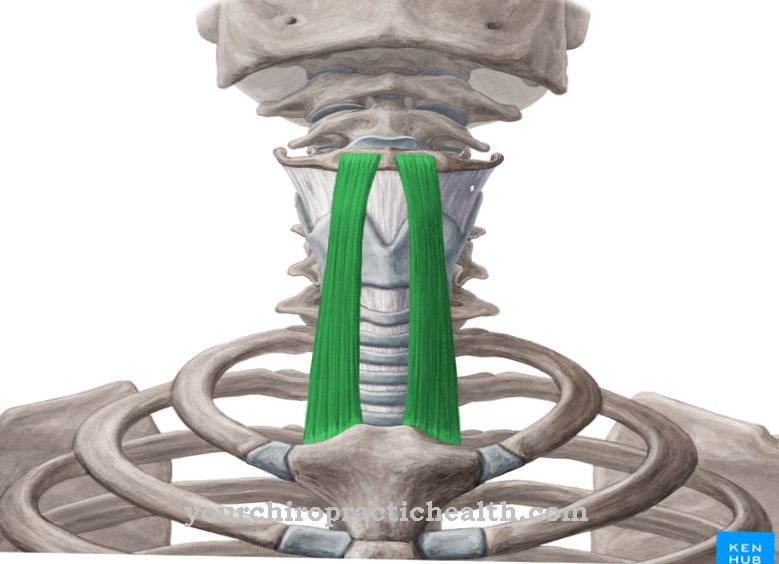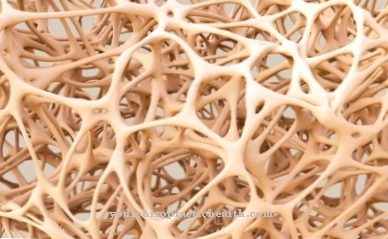A Dialyzer is a device that is used, among other things, in hemodialysis. Dialyzers are built into dialysis machines that cannot function without them. Dialysis treatments can, for example, be used as part of the therapy for hyperkalemia, some poisoning, certain forms of kidney failure or overhydration. An example of an underlying disease that may require kidney replacement therapy is the metabolic disorder diabetes.
What is a dialyzer?

A dialyzer is a technical device that uses medicine as an aid. One area of application for the dialyzer is, for example, hemodialysis, that is, blood purification, as may be required in the context of renal replacement therapy.
Doctors sometimes use dialyzers and Dialysis machine also as synonyms, while others refer to the dialyzer as the most important piece in the dialysis machine: It contains the semi-permeable membrane on which the actual filtering process takes place.
The dialyzer is an important part of a dialysis machine and can come in one of two variations: the capillary dialyzer and the plate dialyzer.
During dialysis, thin tubes carry the patient's blood out of the body and feed it to the dialysis machine. There it flows through the dialyzer and is filtered on the membrane. This means that the urinary substances that would normally get into the urine via the kidneys leave the patient's blood. A dialysate in liquid form absorbs the substances.
Shapes, types & types
Medicine uses the capillary dialyzer and the plate dialyzer in renal replacement therapy.
The capillary dialyzer is a device in which the patient's blood flows through capillaries, i.e. through hollow, thin vessels. A single capillary has a diameter of almost exactly 200 µm. An alternative designation for them is "hollow fiber", which is why doctors sometimes also refer to the hollow fiber dialyzer. Capillary dialyzers are particularly widespread. In addition, there are plate dialyzers that do not direct the blood into many thin vessels, but into wide ones.
Structure & functionality
The membrane, which is the actual filter, plays an important role in the dialyzer. This dialysis membrane is semi-permeable (semipermeable), which means that it does not automatically allow every substance to reach the other side, but instead filters certain substances out or does not allow them to migrate through the dialysis membrane.
In principle, it can also only be permeable in one direction, which likewise corresponds to the definition of semipermeability. During dialysis, a membrane is used that only filters out the urinary substances so that the patient can get the remaining blood components back.
The most important process in the dialysis process takes place on the dialysis membrane. It comes close to the natural functioning of the kidney. The larger the surface of the membrane, the more efficient and effective the filtration.
Medical & health benefits
Dialyzers can be used to treat certain diseases. Basically, it can be said that dialysis mimics the filtering function of the kidneys. This is necessary, for example, when the kidney fails or is confronted with an extraordinary amount of pollutants that it cannot cope with. Medicine therefore also calls dialysis a kidney replacement procedure. However, the kidney of the patient in question may still be (partially) functional. Whether such treatment is necessary depends on individual conditions.
In a healthy person, the kidney plays a crucial role in cleaning the blood. If it is damaged, there is therefore a considerable health risk. Organ damage can be traced back to a wide variety of causes.
An acute indication for renal replacement therapy can exist in the case of acute kidney failure, for example if, in the event of an accident, serious injuries impair the normal function of the cleansing organ so severely that there is a risk of short-term or long-term damage.
Another example is diabetes mellitus. It is a metabolic disorder characterized by insulin resistance or a lack of insulin production in the islet cells of the pancreas. Diabetes can be both hereditary and due to factors affecting personal lifestyle. There is broad consensus among doctors that diet and exercise have a significant effect on a person's risk of developing diabetes. These two factors can also usually influence the further course of the metabolic disorder. Diabetes patients who suffer from kidney dysfunction as a result of their underlying disease are just one example of the potential need for renal replacement therapy.
Another example are patients who have intentionally or unintentionally overdosed a drug or were otherwise exposed to toxic substances. Such acute poisoning can also be an indication for dialysis. In this case, the body would be challenged with the amount of urinary substances that the kidney has to filter out of the blood. Taking an overdose of medication can also lead to kidney and other organ damage, which in the long term may require regular dialysis treatments.








.jpg)





.jpg)






.jpg)






